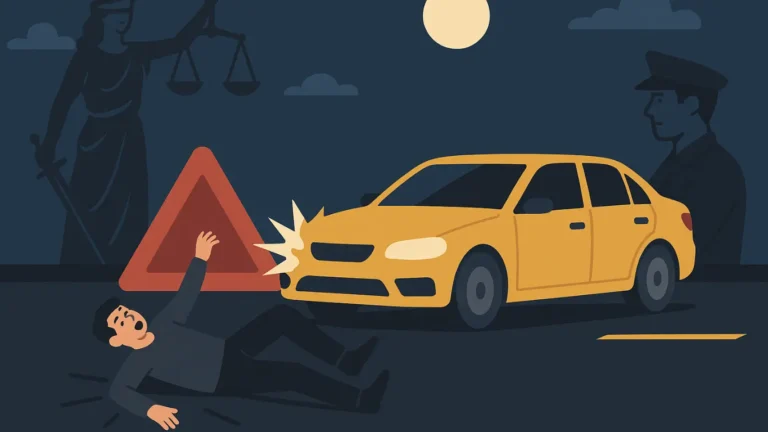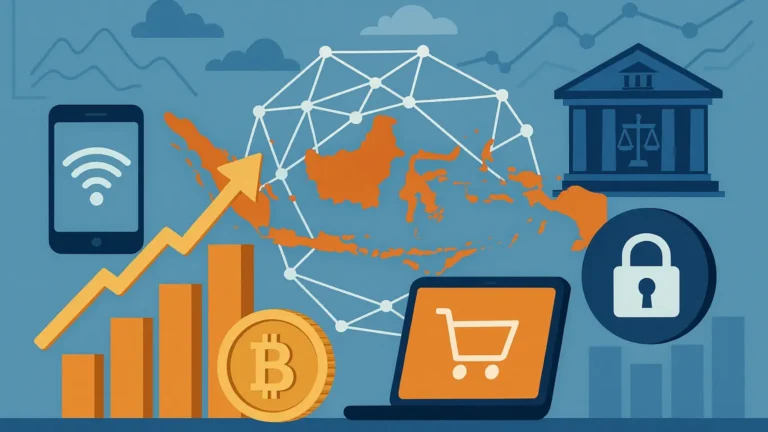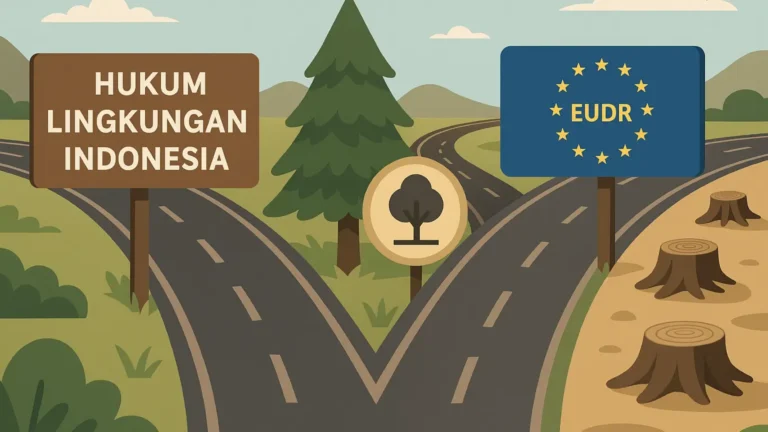
Indonesia stands at the intersection of climate urgency and economic opportunity. As the third-largest tropical forest country globally – after Brazil and the Democratic Republic of Congo it shoulders a disproportionate burden in climate mitigation, particularly through its forests. Forests in Indonesia are not just ecological assets; they are political, economic, and cultural infrastructures upon which the lives of millions depend. Yet, the country’s ambitious commitment to achieving a net sink in the forestry and land use sector (FOLU) by 2030, as outlined in its Nationally Determined Contribution (NDC), remains entangled in a web of regulatory inconsistencies, institutional overlap, and underdeveloped financial instruments. These challenges hinder the operationalization of credible, scalable mechanisms such as those offered by the LEAF Coalition (Lowering Emissions by Accelerating Forest Finance) and the Architecture for REDD+ Transactions (ART) TREES 2.0 standard.
In late 2024, the Indonesian government took the critical step of restructuring its environmental governance architecture by separating the Ministry of Forestry and the Ministry of Environment (now the Environmental Protection Agency, or BPLH). This move was not cosmetic; it sought to address long-standing institutional ambiguities that had historically undermined forest governance. The Ministry of Forestry now oversees technical management of forest lands, conservation, and REDD+ implementation. In contrast, BPLH is responsible for emissions reporting, environmental monitoring, and the National Registry System for Climate Change Control (SRN-PPI). While the delineation of responsibilities promises greater policy clarity, it simultaneously exposes regulatory gaps—especially in integrating forest carbon governance with international standards.
Indonesia’s existing legal framework remains largely tethered to outdated institutional assumptions. The Presidential Regulation No. 98/2021 on Carbon Economic Value and associated ministerial regulations (e.g., Permen LHK Nos. 7 and 21/2023) have yet to be revised to reflect the new ministerial split or to accommodate the more rigorous technical requirements of ART TREES 2.0. The ART TREES standard requires credible baselines (FRELs), adjustments for leakage and uncertainty, and most importantly, guarantees for Indigenous Peoples’ participation through the principle of Free, Prior, and Informed Consent (FPIC). However, Indonesia’s registry system still lacks full integration of Indigenous land maps developed by BRWA and BIG, and there is no legal mechanism in place to prevent double-counting of issued credits. This misalignment jeopardizes not only environmental integrity but also market confidence.
At the stakeholder level, some progress has been made, but fragmentation remains endemic. Local Forest Management Units (KPHs) in provinces like East Kalimantan and West Papua have initiated carbon-related restoration activities, yet these are not formally linked to the SRN-PPI or any Emission Reduction Purchase Agreement (ERPA) documentation. Civil society organizations have participated in public consultations, but legal frameworks for third-party monitoring are still nonexistent. Most critically, Indigenous communities—who are the de facto custodians of many high-carbon-value forests—lack formal legal recognition within the current carbon architecture. Despite partial mapping of customary territories by BRWA and BIG, the Ministry of Forestry has yet to issue a dedicated regulation ensuring Indigenous ownership of carbon rights or access to benefit-sharing mechanisms. As a result, many Indigenous stakeholders are included only symbolically, with no real influence over carbon revenue or project governance.
Within the LEAF framework, Indonesia’s strategy to develop ERPA transactions remains nascent. Pilot provinces such as West Papua and West Kalimantan are being considered, but technical and procedural maturity is far from complete. ERPA documents must include robust baselines, risk mitigation maps, social safeguard protocols, and carbon leakage assessments all aligned with ART TREES standards and subject to third-party verification. For non-specialists, forest carbon credits can be thought of as certificates that validate how much emissions have been prevented through conservation efforts. For example, if West Papua’s FREL is 20 million tons of CO₂ annually, and post-intervention monitoring indicates emissions of only 15 million tons, then 5 million tons can be issued as carbon credits. Assuming a price of USD 10 per ton, this could translate into USD 50 million in climate finance annually. However, this projection depends on rigorous documentation, credible verification, and timely approval by international partners. Optimistic estimates suggest that the first credits under LEAF could be issued in Q2 of 2026 yet this remains contingent on swift institutional reform.
A critical bottleneck in Indonesia’s readiness lies in the availability of ART-accredited domestic verification bodies. At present, verification and validation rely heavily on international agencies, reflecting a lack of national capacity. To localize this capability, the government must fast-track partnerships with established technical organizations like Winrock (for emissions methodologies), Verra and Gold Standard (for complementary validation), and domestic universities such as UGM, UI, and UNIPA, which can develop grassroots monitoring systems and human capital. Unfortunately, bureaucratic inertia and inter-ministerial misalignment continue to obstruct this process. Discrepancies between spatial data from the Ministry of Forestry and land-use plans from the Ministry of Agrarian Affairs (ATR/BPN) routinely result in jurisdictional conflicts that derail project implementation.
So what must be done? First, the existing carbon regulations must be overhauled to reflect the 2024 institutional landscape and integrate ART TREES 2.0’s technical rigor. Second, a unified MRV and baseline system should be developed that merges data from SRN, BRWA, BIG, and the Ministry of Forestry. Third, Indonesia must prioritize the accreditation of national verification bodies to reduce dependency on international actors. Fourth, a legal framework for equitable benefit-sharing must be enacted to ensure that Indigenous and local communities are not passive beneficiaries but co-owners of carbon assets. Fifth, radical transparency is needed—encompassing public access to carbon data, verification outcomes, and grievance mechanisms.
In essence, the transformation of Indonesia’s forest finance ecosystem is not just a technical exercise it is a constitutional one. It tests the state’s ability to reconcile climate ambition with social justice, and to deliver on its international commitments without sacrificing the rights of its most marginalized citizens. If these reforms are pursued with urgency and integrity, Indonesia could emerge not only as a key player in global carbon markets but also as a model for equitable, locally grounded climate finance. This is not merely a matter of policy alignment; it is a question of political will and of whether we are prepared to let forests be governed not by extractive logic, but by regenerative justice.




